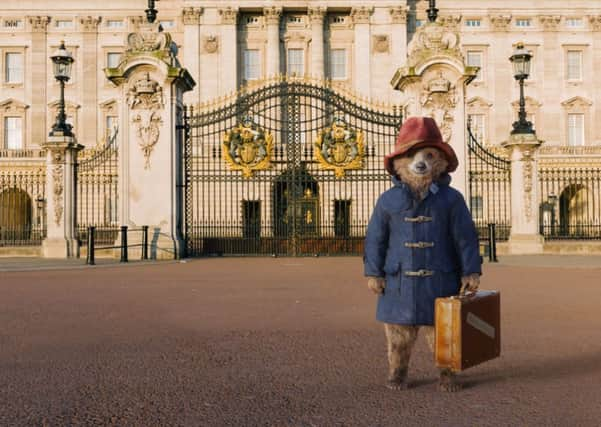A PG, or not a PG? That is the big cinema question


IF Paddington Bear actually met members of The British Board of Film Classification (BBFC) I suspect he would give them a particularly hard stare.
News that the new Paddington film has been given a PG (parental guidance) certificate has caused a bit of a stir. The BBFC initially explained to cinemagoers in its consumer advice that the film featured “dangerous behaviour, mild threat, mild sex references (and) mild bad language”.
Advertisement
Hide AdAdvertisement
Hide AdHowever, it later had a change of heart after the film’s distributor expressed its unease with the description. The BBFC went on to clarify that the swearing was “infrequent” and substituted “innuendo” for “mild sex references”.
The bear’s 88-year-old creator Michael Bond, who chronicled Paddington’s adventures in a series of popular books, said he was surprised by the classification advice for the film, in which Ben Whishaw voices the marmalade-loving bear from Darkest Peru, alongside co-stars Hugh Bonneville, Peter Capaldi and Nicole Kidman as a villainous taxidermist.
Recent children’s films which have been awarded a universal (U) certificate include The Lego Movie and Despicable Me 2, while Frozen and How To Train Your Dragon 2 were awarded a PG certificate.
Interestingly Toy Story, which came out in 1995 was a PG while Toy Story 3, released 15 years later, was given a U classification.
Advertisement
Hide AdAdvertisement
Hide AdFilm companies often feel their movie’s chances at the box office can be harmed if family audiences are discouraged by the descriptions and Tony Earnshaw, The Yorkshire Post’s film critic, says a film’s classification can make a big difference to its financial success. “They matter so much because if a film is given the wrong certificate, or one that is inappropriate, it can cost a film company millions of pounds, because it precludes a significant part of the audience from seeing the film.”
Changes to guidelines introduced last year resulted in the British film body being tougher on bad language at the U level as a result of public consultations.
But it isn’t just young children’s films that are affected. In 2012, The Hunger Games - about teenagers in a totalitarian future being forced to kill each other in gladiatorial combat – was initially given a 15 certificate by the BBFC. This was lowered to a 12A - which means children aged 12 and over can see it alone, while younger children can see it if accompanied by an adult - after producers agreed to make several cuts.
Even so, it caused concern among parents and psychologists who were worried about the impact the violence might have on some youngsters.
Advertisement
Hide AdAdvertisement
Hide AdEarnshaw says Casino Royale, which saw Daniel Craig’s screen debut as James Bond, contained some shocking scenes. “The sequence where he’s fighting in the men’s washroom and smashes this guy’s head off a sink is really brutal stuff and I thought ‘is this a 12A? Really?’”
Modern films certainly seem to be more violent. The 45-second shower murder scene in Alfred Hitchcock’s Psycho is one of the most famous in cinema history, but it’s a mark of the shift in levels of violence in cinema that Psycho, given an adults-only “X” certificate in the UK back in 1960, now carries a relatively tame “15” rating.
“I saw the film earlier this year with a live audience and the scene where he comes out wearing a dress and clutching a knife had people laughing,” says Earnshaw.
So have we just become desensitised to violence in films? “Whether that’s the case or whether it’s got something to do with the evolution of cinema audiences, it’s hard to say.”
If only everything in life was as straightforward as making marmalade sandwiches.